SIX METRE INTERFERENCE REDUCTION SYSTEM
by TREVOR, G3ZYY
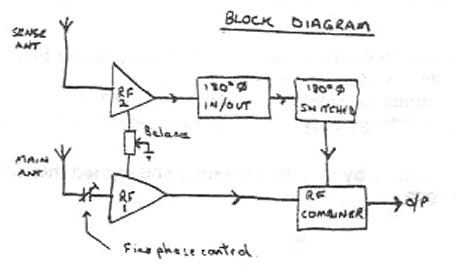 The
circuit described below will substantially reduce or completely
eliminate interference from almost any local source whilst
leaving the wanted signal relatively unaffected, even though it
may be on the same frequency! Once he unit is adjusted for a
particular source of interference, the user is free to operate
any where in the band without further adjustment. The design of
the circuit means it will operate over a small band of
frequencies however, it is sufficient to cover tile entire 6m
band. Due to space restrictions, tile following explanation is an
extract from a longer article intended for RSGB Radio
Communication covering a similar 2m unit.
The
circuit described below will substantially reduce or completely
eliminate interference from almost any local source whilst
leaving the wanted signal relatively unaffected, even though it
may be on the same frequency! Once he unit is adjusted for a
particular source of interference, the user is free to operate
any where in the band without further adjustment. The design of
the circuit means it will operate over a small band of
frequencies however, it is sufficient to cover tile entire 6m
band. Due to space restrictions, tile following explanation is an
extract from a longer article intended for RSGB Radio
Communication covering a similar 2m unit.
The block diagram shows the method of operation. Both wanted
and interfering signals arrive at pre-amp (1) from the antenna
switch. The sense antenna is arranged to pick up mainly the
interfering signal which is passed to pre-amp (2). Both outputs
add in the combiner, however, as the interfering signal is
changed in phase though 180 degrees, the interfering signal
cancels leaving the wanted signal only. The antenna switch uses
quarter wave lines and 1N914 diodes similar to the 2m PAs of the
seventies. No supply (for tile switch) is required and no PTT
input. It should operate at powers from 10mW to around 30 watts.
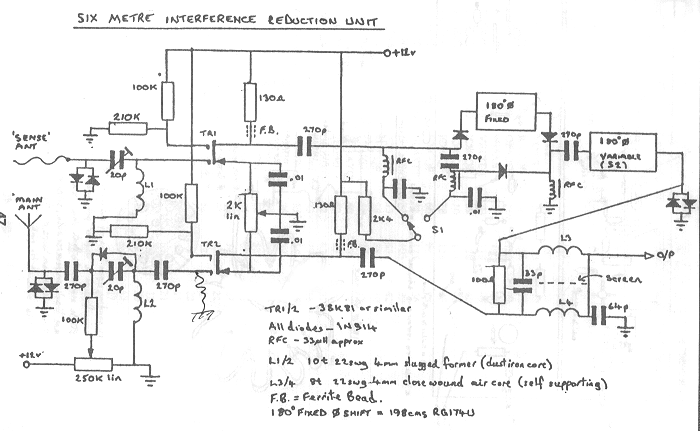 |
| The Circuit Diagram |
Construction is on double sided PCB, layout not particularly critical, hit the layout shown works! It can be drawn with an etch resist pen.
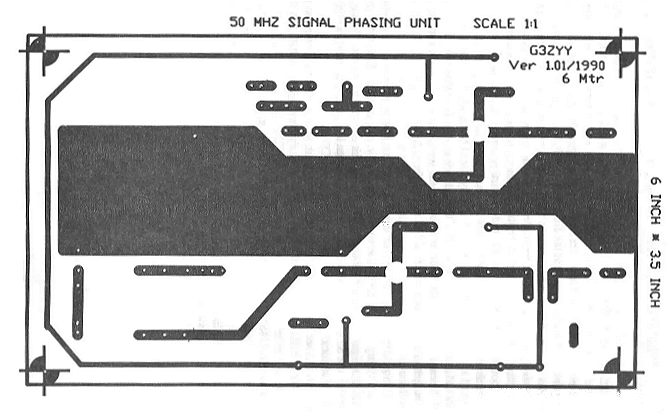 |
| The PCB Layout |
Components are mounted through the copper ground plane. The screens that run down the centre of both sides of the PCB, are constructed from the same material about one inch high and are soldered to the earth plane. The earth plane on both sides should be pin soldered together at the points shown. The container should be RF tight, e.g. a die-cast box.
Component values are not critical however the coil dimensions should be adhered to. Note the small screen between L3 and L4. e phase switch is a twelve way rotary, soldered to a PCB carrier holding eleven loops of RG-174 coax.
Tune to the interfering signal, if it is broadband find a peak otherwise anywhere will do. Rotate balance to find a dip, it may be shallow but a dip must be found. If no dip, then adjust sense antenna. Adjust the phase switch for a null, switching in or cut the fixed 180 degree switch as required for the best null. Adjust the phase control and balance as required. Switching in and out the fixed 180 degree shift will give a measure of the rejection achieved. The effect can be quite startling! It should be noted that this unit will also deal effectively with interference from a local amateur, no matter whether be is clean and just very strong, or wide as a barn door; 40 dB or more of rejection can be achieved.
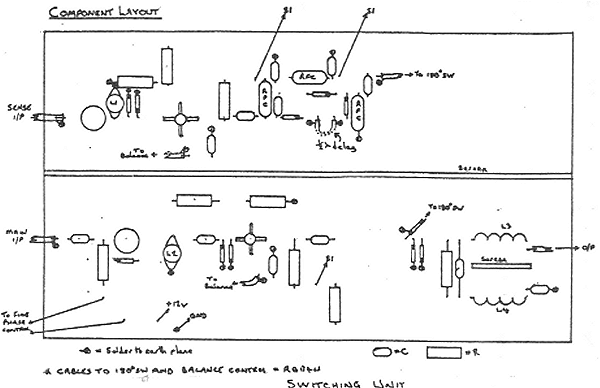 |
| The Component Layout |
Even if you both move up and down the band. no further adjustment should be needed. The effectiveness of the unit largely depends upon the relative strength of the interfering signal at the main and sense antenna. Ideally it will be equal, if not the balance control should make up for the difference. If the balance control is unable to compensate for the difference, then the only solution is to alter the sense antenna. To avoid unwanted phase changes, the sense antenna should be remote from the shack. E.g. a wire in the loft fed with co-axial cable.
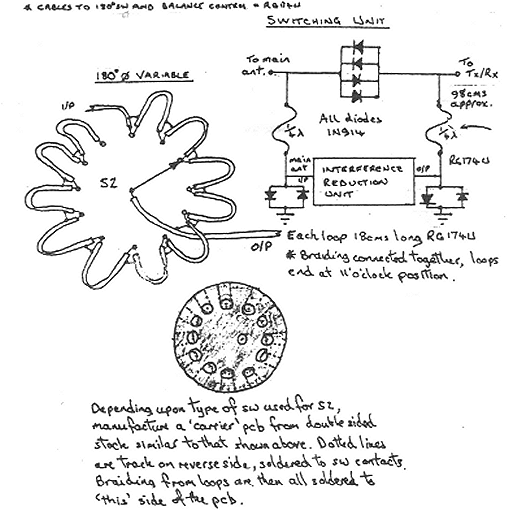 |
| The Phase Switching Unit |
The most impressive (for me) demonstration to date has been two local amateurs transmitting on the same frequency simultaneously, one at many dB over S9, the other with his signal reduced to around s2. With this unit adjusted to take out the stronger signal, the S2 station appeared to be transmitting on his own with barely a whisper from the other local!
As you can see, there is little, electronically at least, to this unit and it's well worth the trouble to build and it's a lot of fun to play with.
73s es gl de Trev, G3ZYY
![]() To return to the archive page click here
To return to the archive page click here